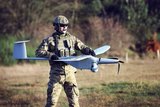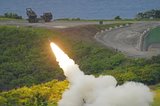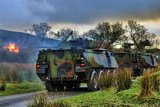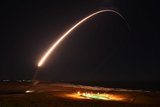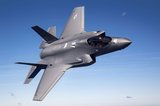What will future military drones look like?
Future solutions are expected to feature advanced video, audio, communication and anti-jamming capabilities. (Photo: USMC)
The deployment of drones has been growing in importance in the last few years. The Armenia-Azerbaijan war and Ukraine conflict show that the use of UAVs will be crucial in future warfare. The proliferation of threats on the battlefield is expected to require the development and operation of advanced solutions.
This scenario will demand more rugged designs to endure in all types of environments, advanced video, audio, communication and anti-jamming capabilities, longer-range batteries and better targeting and identification sensors.
‘Future drones are going to be radically more lethal and more sophisticated. They will also probably be mass producible,' Brynn Tannehill,
Already have an account? Log in
Want to keep reading this article?
More from Defence Notes
-
![Ireland spells out $2.3 billion shopping list in five-year defence spending plan]()
Ireland spells out $2.3 billion shopping list in five-year defence spending plan
Ireland’s multi-annual investment in capital defence spending is set to rise from €300m in 2026 to €360m in 2029–2030 with major upgrades across land, air, maritime and cyber domains.
-
![Canada to deepen integration of multi-domain capabilities to strengthen its defences]()
Canada to deepen integration of multi-domain capabilities to strengthen its defences
The Canadian Department of National Defence has created new organisations to manage the procurement and integration of all-domain solutions and allocated US$258.33 million to strengthen production capacities.
-
![US National Security Strategy prioritises advanced military capabilities and national industry]()
US National Security Strategy prioritises advanced military capabilities and national industry
The 2025 NSS has emphasised investment in the US nuclear and air defence inventory and national industry, but it leaves multiple unanswered questions on how the White House will implement this approach.
-
![Canada set to look away from its neighbour and across the Atlantic for partners]()
Canada set to look away from its neighbour and across the Atlantic for partners
While non-EU UK struggles to join the Security Action for Europe initiative, which provides loans for defence programmes, Canada has become the first country outside Europe to get access – and did so for a nominal fee.
-
![NATO experiments with solutions to integrate networks, AI and uncrewed systems]()
NATO experiments with solutions to integrate networks, AI and uncrewed systems
During the latest edition of the NATO DiBaX, the alliance tested multiple capabilities to inform requirements for future efforts.









